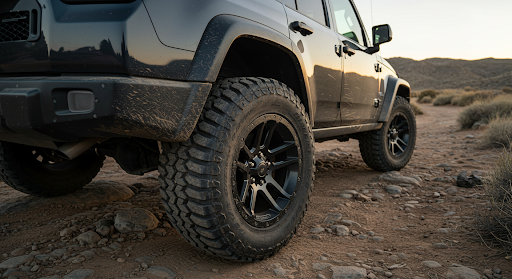
 Tell me if I’m wrong, but my understanding is that the goal of this technological drive toward hybrids and fuel cells is to lessen America’s (and the world’s for that matter) dependence on foreign oil. Not just because we may soon run out of the stuff, with emerging nations like China joining an ever-growing world car park, but also to wrest our nation from the grip of OPEC.
Tell me if I’m wrong, but my understanding is that the goal of this technological drive toward hybrids and fuel cells is to lessen America’s (and the world’s for that matter) dependence on foreign oil. Not just because we may soon run out of the stuff, with emerging nations like China joining an ever-growing world car park, but also to wrest our nation from the grip of OPEC.
That’s all well and good, but while the interest in hybrids is growing and more manufacturers will offer more models, analysts predict that by 2007, hybrids will still make up only about 2 percent of the total U.S. car park. While that helps, it doesn’t amount to a mileage revolution. And while hydrogen shows promise as the fuel of the future, it will still be many years before hydrogen-powered cars will be a significant part of the fleet.
About a year-and-a-half ago at a DaimlerChrysler advanced technology event, then Senior Vice President Engineering Technologies and Regulatory Affairs, Bernie Robertson, brought up the subject of ethanol fuel (E85).
While it may have come in response to the media bashing that DCX and the other domestics were getting for falling behind Toyota and Honda by not having a viable hybrid program, Robertson made a valid point. If people were really interested in reducing America’s dependence on foreign oil, they could already be doing something about it, by fueling their three million flexible-fuel vehicles (FFVs) with E85 — which they weren’t.
E85 is a blend of 85 percent ethanol and 15 percent petroleum. Ethanol can be made from virtually any starch feedstock, such as sugar cane, wheat or milo, but most of the fuel ethanol used in the U.S. today is produced from corn and America grows a lot of corn. A bushel of field corn will yield, among other things, 31.5 lb. of starch, which can be converted to among other things, 2.7 gallons of fuel ethanol.
Next-generation ethanol production facilities will include production from biomass feedstocks. A production plant under construction in Jennings, La., will produce ethanol from rice hulls and bagasse (the dry dusty pulp that remains after juice is extracted from sugar cane). California has plans for three plants that will produce ethanol from rice straw and another company plans to build production facilities in New York and Alabama to produce ethanol from the biomass portion of municipal waste.
The benefits of E85 go beyond the fact that its made from renewable resources grown (and thrown away) right here in the U.S. E85 high oxygen content makes it burn cleaner than gasoline and it contains 80 percent less gum-forming compounds, like the olefins found in gasoline. Production and use of E85 can result in as much as a 30 percent reduction in greenhouse gases.
That three million vehicles that Robertson talked about has grown to 4 million today. Flex-fuel vehicles are available from Ford, DaimlerChrysler, GM, Isuzu, Mazda, Mercedes and Nissan, including mileage offenders like Chevrolet Suburban, Dodge Ram and Nissan Titan.
The spike in oil prices this summer has renewed an interest in E85. Many new stations are popping up all over the U.S. (228 in 26 states as of this writing), with new ones coming on line every day. These stations are selling E85 for 85 cents a gallon which more than makes up for the 5 percent reduction in fuel economy that ethanol yields. And everyone’s getting involved. Legislation recently passed by the House and Senate promises to make E85 as easy to distribute as gasoline and Marathon Ashland Petroleum, the fifth largest refiner of fuel in the U.S. announced in July that it would offer E85 at 14 terminals supplying the Midwest. GM launched a program in 2003 that included a direct mail campaign that sent E85 debit cards to owners of flex-fuel GM vehicles. While future campaigns will target more flex-fuel vehicle owners, we need to promote the sale of these cars and trucks to people who don’t own them. In fact, we should make every vehicle capable of running on E85. If we truly want to lessen our dependence on foreign oil, we can start right now. Just fill up our cars with E85.









More Stories
Best Wheel Size for Off-Road Adventures: What People Get Wrong
Trusted Auto Collision Repair That Restores Both Performance and Peace of Mind
What You Need to Know About Tire Pressure in Winter vs Summer